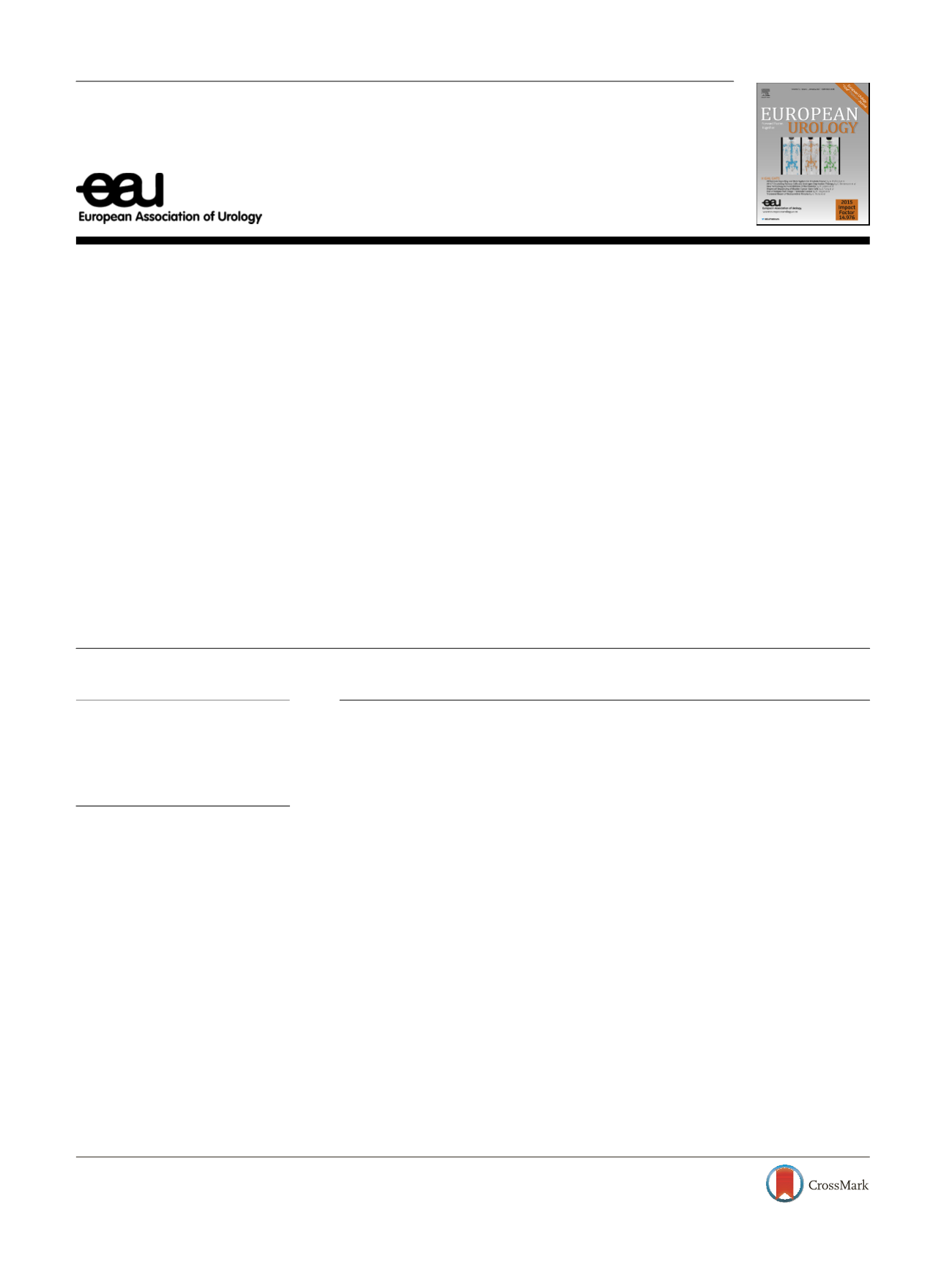

Platinum Priority – Prostate Cancer
Editorial by Devin N. Patel and Stephen J. Freedland on pp. 950–951 of this issue
The Single-parameter, Structure-based IsoPSA Assay
Demonstrates Improved Diagnostic Accuracy for Detection of Any
Prostate Cancer and High-grade Prostate Cancer Compared to a
Concentration-based Assay of Total Prostate-specific Antigen:
A Preliminary Report
Eric A. Klein
a , * ,Arnon Chait
b ,Jason M. Hafron
c ,Kenneth M. Kernen
c ,Kannan Manickam
d ,Andrew J. Stephenson
a ,Mathew Wagner
e ,Hui Zhu
f ,Aimee Kestranek
b ,Boris Zaslavsky
b ,Mark Stovsky
a , ba
Department of Urology, Glickman Urological and Kidney Institute, Cleveland Clinic, Cleveland, OH, USA;
b
Cleveland Diagnostics, Cleveland, OH, USA;
c
Pathology and Research Department, Michigan Institute of Urology, St Clair Shores, MI, USA;
d
Chesapeake Urology Associates, Baltimore, MD, USA;
e
Kaiser
Permanente Northwest, Clackamas, OR, USA;
f
Louis Stokes VA Medical Center, Cleveland, OH, USA
E U R O P E A N U R O L O G Y 7 2 ( 2 0 1 7 ) 9 4 2 – 9 4 9available at
www.scienced irect.comjournal homepage:
www.europeanurology.comArticle info
Article history:
Accepted March 17, 2017
Associate Editor:
James Catto
Keywords:
Biomarker
Prostate cancer
Prostate-specific antigen
Abstract
Background:
IsoPSA is a serum-based assay that predicts prostate cancer (PCa) risk by
partitioning isoforms of prostate-specific antigen (PSA) with an aqueous two-phase reagent.
Objectives:
To determine the diagnostic accuracy of IsoPSA in identifying the presence or
absence of PCa and the presence of high-grade disease in a contemporary biopsy cohort.
Design, setting, and participants:
Multicenter prospective study of 261 men scheduled for
prostate biopsy at five academic and community centers in the USA enrolled between August
2015 and December 2016.
Intervention:
Performance of the IsoPSA assay.
Outcome measurements and statistical analysis:
Discrimination power was evaluated using
receiver operating characteristic (ROC) analysis. The outcome of the IsoPSA assay was trans-
formed into risk probability using logistic regression. Decision curve analysis (DCA) was used to
compare the net benefit of IsoPSA against other clinical protocols.
Results and limitations:
The overall prevalence was 53% for any PCa and 34% for high-grade
PCa. The area under the ROC curve was 0.79 for any cancer versus none and 0.81 for high-grade
PCa versus low-grade PCa/benign histology. In this preliminary study, DCA revealed a superior
net benefit of IsoPSA against no biopsy, all biopsy, and the modified Prostate Cancer Prevention
Trial Risk Calculator 2.0. At a cutoff selected to recommend biopsy, IsoPSA demonstrated a 48%
reduction in false-positive biopsies; at a cutoff selected to identity men at low risk of high-grade
disease, there was a 45% reduction in the false-positive rate.
Conclusion:
The structure-based IsoPSA assay outperformed concentration-based PSAmeasure-
ment, and provided a net benefit against other protocols. Once validated, clinical use of IsoPSA
could significantly reduce unnecessary biopsies while identifying patients needing treatment.
Patient summary:
The IsoPSA assay outperformed prostate-specific antigen in predicting the
overall risk of prostate cancer and the risk of clinically significant cancer in a preliminary study.
The IsoPSA assay could assist in determining the need for prostate biopsy for patients.
#
2017 European Association of Urology. Published by Elsevier B.V. All rights reserved.
* Corresponding author. Glickman Urological and Kidney Institute, Cleveland Clinic, 9500 Euclid Ave,
Cleveland, OH 44106, USA. Tel. +1 216 4445601; Fax: +1 216 6364492.
E-mail address:
kleine@ccf.org(E.A. Klein).
http://dx.doi.org/10.1016/j.eururo.2017.03.0250302-2838/
#
2017 European Association of Urology. Published by Elsevier B.V. All rights reserved.
















